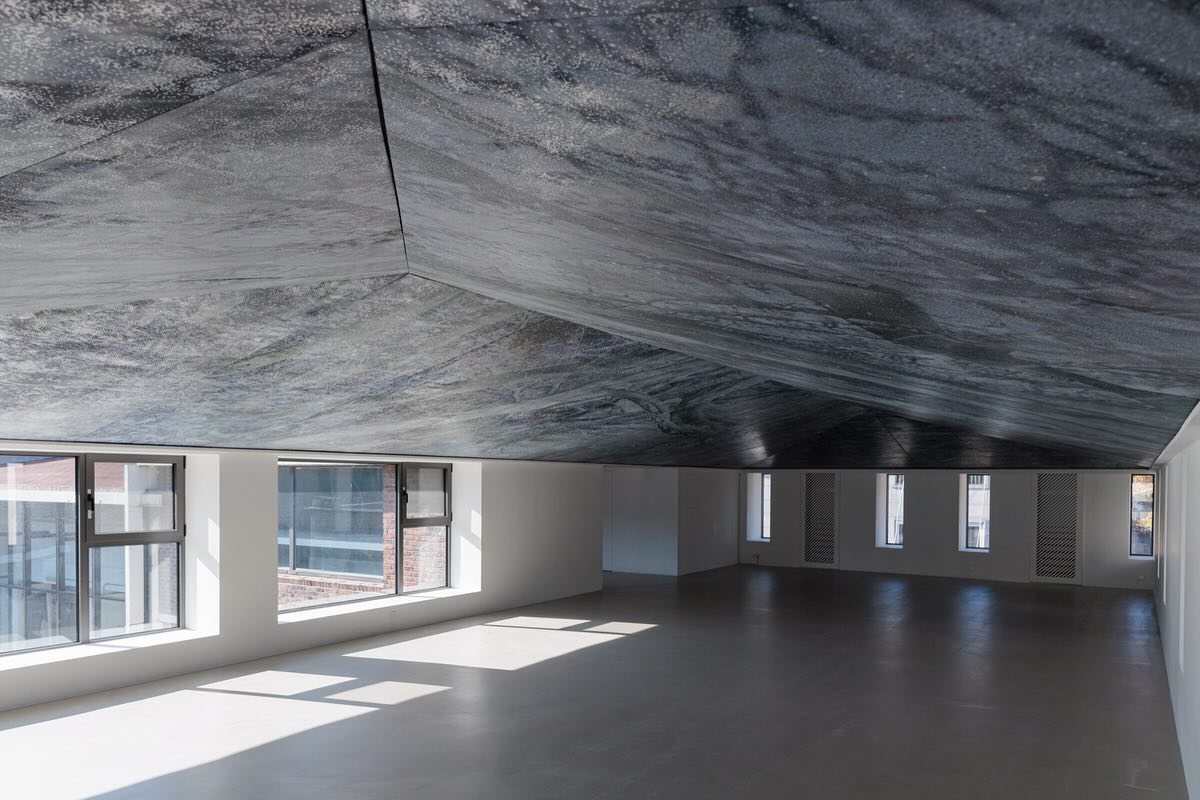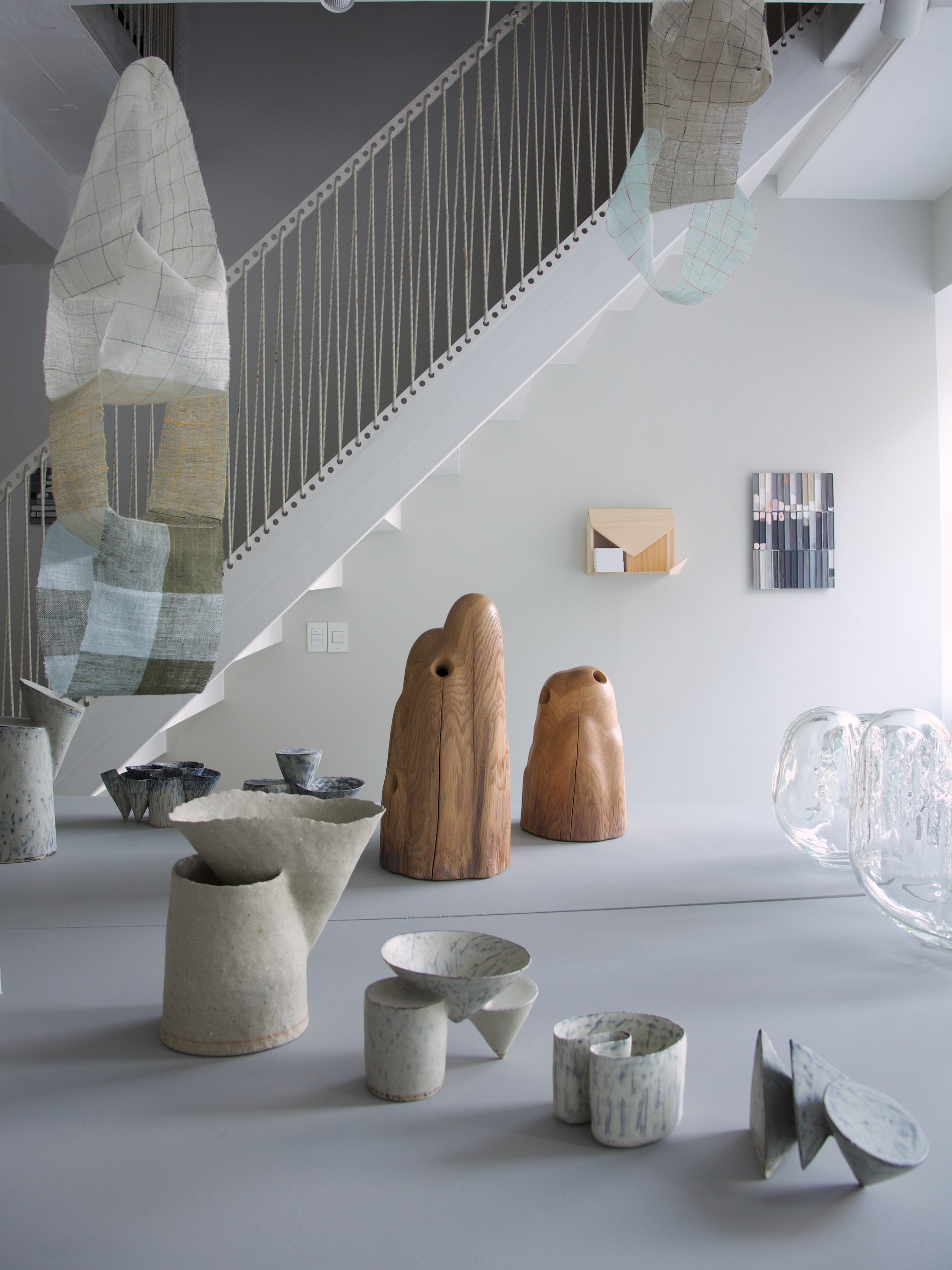Although the genre receives relatively little attention in Korea, architecture and its relationship to contemporary art have been a very important field in the contemporary art world.
 Installation view of 'View Folly' & 'Architecture of Autonomy' by Moon, Hoon, Realities:united, Jan Edler & Tim Edler, ⓒ Unreal Studio and Kerb
Installation view of 'View Folly' & 'Architecture of Autonomy' by Moon, Hoon, Realities:united, Jan Edler & Tim Edler, ⓒ Unreal Studio and KerbIn 1932, the Museum of Modern Art (MoMA) in New York established a curatorial department devoted to architecture and design, which now comprises approximately 28,000 works ranging from large-scale design objects to architectural models. Hong Kong’s M+, which opened in November 2021 to lead the Asian visual arts culture, is also in the process of assembling a strong architecture and design collection.
Architecture collections in South Korean museums are very small compared to international art museums but there have been projects that combine architecture and visual art.
An example is the Young Architects Program of the National Museum of Modern and Contemporary Art (MMCA). In partnership with MoMA and with the support of Hyundai Card, the MMCA held the Young Architects Program from 2014 to 2017 in which the works of young architects were exhibited in the outdoor park of the Seoul museum.
An ongoing project is Gwangju Folly, an urban regeneration project initiated in 2011 by the Gwangju Biennale Foundation and Gwangju Metropolitan City.
 Kim, Chanjoong & Jin, Siyon, 'FunPun Folly: INFINITY LIGHT,' Gwangju Folly III ⓒ Unreal Studio and Kerb
Kim, Chanjoong & Jin, Siyon, 'FunPun Folly: INFINITY LIGHT,' Gwangju Folly III ⓒ Unreal Studio and KerbThe term “folly” was first applied to decorative buildings in Europe, typically mock-Gothic ruins constructed in a large garden or park. Gwangju Folly borrows this term to reflect the project’s concept, but architectural installations offer a variety of experiences.
In 2011, the first project gathered ten Korean and international architects and artists, including Seung H-Sang, a South Korean architect; Ai Weiwei, a Chinese contemporary artist; Peter Eisenman, an American architect; and several other renowned creators.
Eleven installations (or follies) were initially placed in various locations throughout the old downtown district of Gwangju City. Each artist took a contemporary approach to traditional Korean architecture or the history of the old downtown area of Gwangju to create the installations. There have been four Gwangju Folly projects, and the city now has over thirty follies throughout its downtown area.
Although numerous architects and artists participated in these projects, Do Ho Suh, Siyon Jin, and Lee Lee Nam are the three Korean artists who have collaborated with an architectural firm to build follies.
 Do Ho Suh & Suh Architects, 'In-between Hotel,' Gwangju Folly II. Courtesy of Gwangju Folly.
Do Ho Suh & Suh Architects, 'In-between Hotel,' Gwangju Folly II. Courtesy of Gwangju Folly.Do Ho Suh (b. 1962) is a renowned artist whose installation works explore the concepts of space and home. Suh worked with Suh Architects to house the In-Between Hotel, a temporary dwelling unit, in a truck. While the majority of the follies were fixed in one place, Suh intended to create a moving project in which visitors could interact with the actual city.
The FunPun Folly was created by Siyon Jin, a media artist from Gwangju, and Kim Chan-joong, an architect from Seoul, whose project won a competition. The project consists of four follies with distinct themes that employ media art in abandoned areas of the old city. Lee Lee Nam collaborated with architect Kim Min-guk to install a 74-meter-high media video work on the city’s tollgate that reflects the spirit of Gwangju.
Other internationally renowned artists and architects participated in the Gwangju Folly projects, including the New Delhi-based Raqs Media Collective, the Danish artist group SUPERFLEX, and well-known architects such as Rem Koolhaas and Juan Herreros.
Gwangju Folly announced on June 15, 2022, that the “Gwangju Folly Renewal Project Exhibition” will feature two new works. Bae Hyung-min has been appointed by the Gwangju Biennale Foundation as the next General Director of the 5th Gwangju Folly to initiate and plan the next project.













